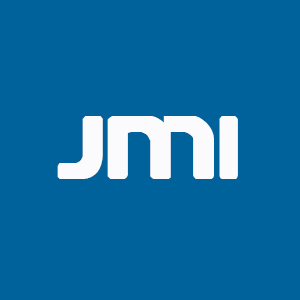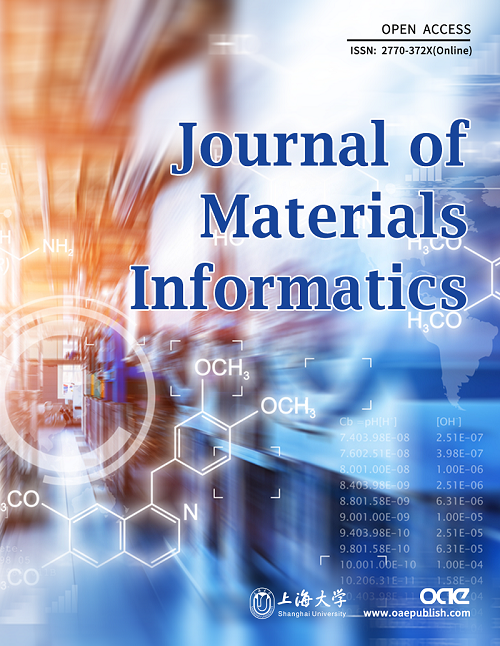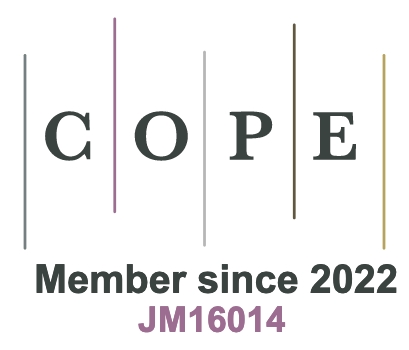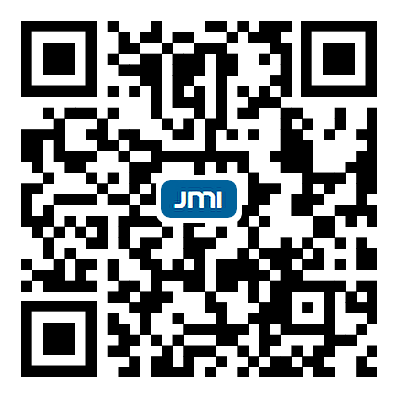REFERENCES
3. Aggarwal R, Demkowicz MJ, Marzouk YM. Information-driven experimental design in materials science. In: Lookman T, Alexander FJ, Rajan K, editors. Information science for materials discovery and design. Cham: Springer International Publishing; 2016. pp. 13-44.
4. Himanen L, Geurts A, Foster AS, Rinke P. Data-driven materials science: status, challenges, and perspectives. Adv Sci 2019;6:1900808.
6. Schütt KT, Sauceda HE, Kindermans PJ, Tkatchenko A, Müller KR. SchNet - a deep learning architecture for molecules and materials. J Chem Phys 2018;148:241722.
7. Agrawal A, Choudhary A. Deep materials informatics: applications of deep learning in materials science. MRS Communications 2019;9:779-92.
8. Ramprasad R, Batra R, Pilania G, Mannodi-kanakkithodi A, Kim C. Machine learning in materials informatics: recent applications and prospects. npj Comput Mater 2017;3.
9. Nelson CT, Ghosh A, Oxley M, et al. Deep learning ferroelectric polarization distributions from STEM data via with and without atom finding. npj Comput Mater 2021;7.
10. Zhang Y, Wen C, Wang C, et al. Phase prediction in high entropy alloys with a rational selection of materials descriptors and machine learning models. Acta Mater 2020;185:528-39.
11. He J, Li J, Liu C, et al. Machine learning identified materials descriptors for ferroelectricity. Acta Mater 2021;209:116815.
12. Xue D, Balachandran PV, Wu H, et al. Material descriptors for morphotropic phase boundary curvature in lead-free piezoelectrics. Appl Phys Lett 2017;111:032907.
13. Weng B, Song Z, Zhu R, et al. Simple descriptor derived from symbolic regression accelerating the discovery of new perovskite catalysts. Nat Commun 2020;11:3513.
14. Callister, WD, Rethwisch DG. Materials science and engineering an introduction, 10th ed. John Wiley & Sons, Inc.; 2018.
15. Guedes Soares C, Garbatov Y, Zayed A. Effect of environmental factors on steel plate corrosion under marine immersion conditions. Corr Eng, Sci Technol 2013;46:524-41.
16. Stinville JC, Martin E, Karadge M, et al. Fatigue deformation in a polycrystalline nickel base superalloy at intermediate and high temperature: competing failure modes. Acta Mater 2018;152:16-33.
17. Iwasaki Y, Takeuchi I, Stanev V, et al. Machine-learning guided discovery of a new thermoelectric material. Sci Rep 2019;9:2751.
18. Kusne AG, Yu H, Wu C, et al. On-the-fly closed-loop materials discovery via Bayesian active learning. Nat Commun 2020;11:5966.
19. Yuan R, Tian Y, Xue D, et al. Accelerated search for BaTiO3-based ceramics with large energy storage at low fields using machine learning and experimental design. Adv Sci (Weinh) 2019;6:1901395.
20. Xue D, Balachandran PV, Hogden J, Theiler J, Xue D, Lookman T. Accelerated search for materials with targeted properties by adaptive design. Nat Commun 2016;7:11241.
21. Rickman J, Lookman T, Kalinin S. Materials informatics: from the atomic-level to the continuum. Acta Mater 2019;168:473-510.
22. Balachandran PV, Xue D, Theiler J, Hogden J, Lookman T. Adaptive strategies for materials design using uncertainties. Sci Rep 2016;6:19660.
23. Xue D, Xue D, Yuan R, et al. An informatics approach to transformation temperatures of NiTi-based shape memory alloys. Acta Mater 2017;125:532-41.
24. Gopakumar AM, Balachandran PV, Xue D, Gubernatis JE, Lookman T. Multi-objective optimization for materials discovery via adaptive design. Sci Rep 2018;8:3738.
25. Tian Y, Yuan R, Xue D, et al. Determining multi-component phase diagrams with desired characteristics using active learning. Adv Sci (Weinh) 2020;8:2003165.
26. Carpentier A, Lazaric A, Ghavamzadeh M, Munos R, Auer P. Upper-confidence-bound algorithms for active learning in multi-armed bandits. In: Kivinen J, Szepesvári C, Ukkonen E, Zeugmann T, editors. Algorithmic learning theory. Berlin: Springer Berlin Heidelberg; 2011. pp. 189-203.
27. Jones DR, Schonlau M, Welch WJ. Efficient global optimization of expensive black-box functions. J Glob Optim 1998;13:455-92.
28. Granato A, Lücke K. Theory of mechanical damping due to dislocations. J Appl Phys 1956;27:583-93.
29. Landkof B. Magnesium Applications in aerospace and electronic industries. In: Kainer KU, editor. Magnesium alloys and their applications. Weinheim: Wiley-VCH Verlag GmbH & Co. KGaA; 2000. pp. 168-72.
30. Yu L, Yan H, Chen J, Xia W, Su B, Song M. Effects of solid solution elements on damping capacities of binary magnesium alloys. Mater Sci Eng A 2020;772:138707.
31. Niu R, Yan F, Wang Y, Duan D, Yang X. Effect of Zr content on damping property of Mg-Zr binary alloys. Mater Sci Eng A 2018;718:418-26.
32. Tang Y, Zhang C, Ren L, et al. Effects of Y content and temperature on the damping capacity of extruded Mg-Y sheets. J Mag Alloys 2019;7:522-8.
33. Cui Y, Li J, Li Y, Koizumi Y, Chiba A. Damping capacity of pre-compressed magnesium alloys after annealing. Mater Sci Eng A 2017;708:104-9.
34. Wang J, Lu R, Qin D, Huang X, Pan F. A study of the ultrahigh damping capacities in Mg-Mn alloys. Mater Sci Eng A 2013;560:667-71.
35. Wang J, Li S, Wu Z, Wang H, Gao S, Pan F. Microstructure evolution, damping capacities and mechanical properties of novel Mg-xAl-0.5Ce (wt%) damping alloys. J Alloys Compd 2017;729:545-55.
36. Cui Y, Li Y, Sun S, et al. Enhanced damping capacity of magnesium alloys by tensile twin boundaries. Scr Mater 2015;101:8-11.
37. Somekawa H, Watanabe H, Basha DA, Singh A, Inoue T. Effect of twin boundary segregation on damping properties in magnesium alloy. Scr Mater 2017;129:35-8.
38. Chen Y, Tian Y, Zhou Y, et al. Machine learning assisted multi-objective optimization for materials processing parameters: a case study in Mg alloy. J Alloys Compd 2020;844:156159.
39. Cai WB, Zhang Y, Zhou J. Maximizing expected model change for active learning in regression : proceedings of IEEE 13th International Conference on Data Mining; 2013 Dec 7-10; Texas, USA. IEEE; 2013. p. 51-60.








